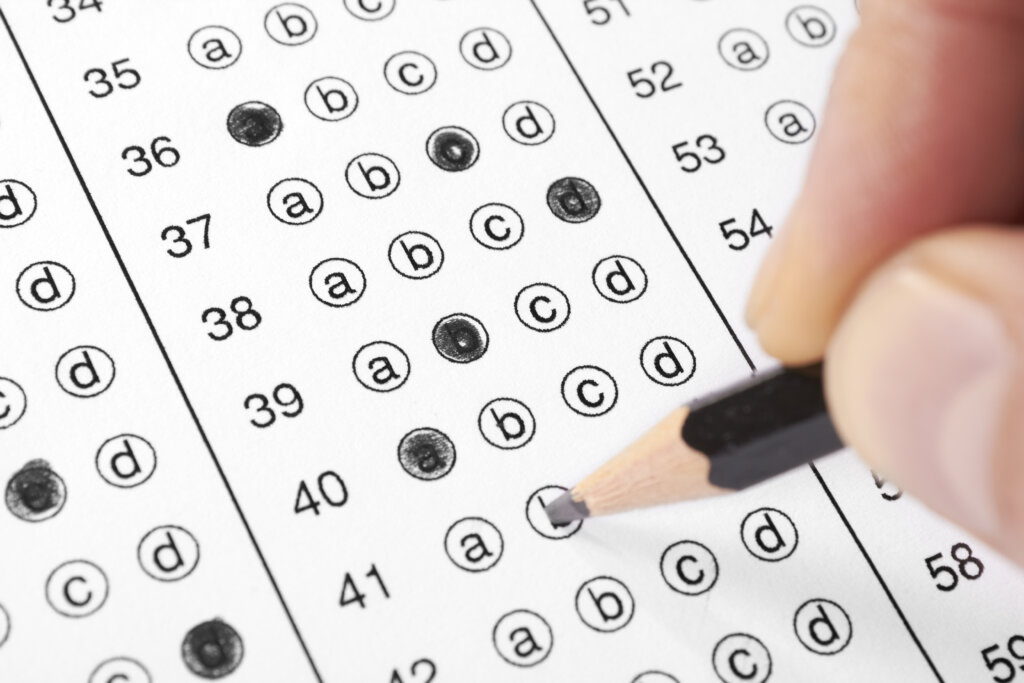Standardized School Tests Show the Pandemic’s Impact on Maryland Students

Scores on standardized academic proficiency tests taken during the COVID-19 pandemic have dramatically fallen since Maryland students were last tested in spring 2019.
Only 15% of the state’s public school students in grades 3 through 8 and high school achieved scores showing competency in math and 31% passed English on the Maryland Comprehensive Assessment Program this fall, according to a presentation that Maryland State Department of Education officials made to the Maryland State Board of Education on Tuesday.
This is a steep drop from the 33% of public school students who passed math and 44% who passed English in 2019.
Jean Halle told fellow board members that they ought to be shocked by these numbers.
“These numbers are really truly shocking and there’s no place in the state where you can sit and feel okay about these numbers,” she said. “This is worthy to cry over.”
The federal Every Student Succeeds Act (ESSA) requires public schools to give reading and math tests annually to students in 3rd through 8th grades, and once in high school, to identify learning gaps and measure effectiveness of instruction. Public schools must also test students in science once in grade school, middle school and high school.
But federally required testing was canceled in 2020, the first year of the pandemic, and reauthorized last year, although states were allowed to shorten the exams and deliver them remotely. Maryland education officials decided to not give standardized tests last spring but administered shorter diagnostic tests in fall 2021.
Then, students were tested on what they were expected to know in the grade they were in last spring.
Maryland education officials also found that 47% of third graders who passed English in 2019 did not pass in fifth grade and 51% of third graders who passed math in 2019 did not pass in fifth grade. The downward trend was true in each of Maryland’s 24 school districts.
State Superintendent Mohammed Choudhury told the board that math scores were falling already before the pandemic and “it’s still a massive struggle to make that shift.”
He added that improving math proficiency will be a key part of the multi-year strategic plan that the board and MSDE are developing as a guide to the implementation of the Blueprint for Maryland’s Future, a multi-billion-dollar education reform plan the implementation of which is to be detailed by Dec. 1.
But not all test scores from the fall were worse than before the pandemic. On science tests, student proficiency rose from 34% in 2019 to 42% in 2021. Only students in grades five and eight and high school are required to take a science test.
And although English scores went down generally compared to before the pandemic, some small groups saw improvement: more students in grades six and ten had proficient scores after the pandemic. Fifty-three percent of students in grade six passed English in 2021, an improvement from the 41% of sixth graders who passed in 2019. Similarly, 57% of students in grade 10 passed English in 2021, an increase of 14 percentage points from the 43% that passed in 2019.
When board members asked why these grades had higher proficiency scores during the pandemic, school officials said they did not have enough data yet to say.
For high schoolers, Choudhury said, it may be because standardized test scores are worth 20% of high school students’ grades. “You’re not going to get an A in a class if you don’t get that other 20%, so that might also be a factor,” he said.
Within the first two months of school, Maryland kindergarteners were assessed on their readiness to learn, which includes language and literacy skills, physical well-being and motor development. Twenty-one of the state’s 24 school districts administered the test to 73% of their kindergarteners this school year and found that 40% were ready for kindergarten compared to 47% of kindergartners that demonstrated readiness in 2019.
Kindergarten enrollment in Maryland also declined by 25%, reflecting a wider nationwide trend of a significant number of children, especially in younger grades, who failed to enroll in their local schools during the pandemic.
“This data truly is sad and we’ve got a lot of work ahead of us,” said board member Vermelle Greene.
Public school students are slated to take state proficiency tests as usual later this spring.




 Creative Commons Attribution
Creative Commons Attribution